Today’s Current Affairs: 25th Dec 2023 for UPSC IAS exams, State PSC exams, SSC CGL, State SSC, RRB, Railways, Banking Exam & IBPS, etc
Table of Contents
World Bank Released International Debt Report:

India’s total debt is around 81%, but most of it is domestic debt. India’s external debt is around 18.6% (around USD 624 billion at the end of March 2023), as per the RBI data.
- Public and publicly guaranteed (PPG) debt service payments by Low and Middle-Income Countries (LMICs) reached over US$443 billion in 2022, posing a risk to their financial sustainability.
- Rising interest rates and unfavourable exchange rate movements could make servicing external debt burdensome.
- India’s debt service was 2% of the GNI in 2022.
- The debt servicing may crowd out spending on other development priorities.
- Due to a tighter monetary policy in advanced economies, there was a net outflow of over US$127 billion from LMICs as investors sought attractive returns in US and European bond
- The report recommends debt buybacks and exchanges, and exploring debt-for-nature swaps to combine debt relief with funding green projects.
IDR:
- Formerly known as International Debt Statistics (IDS), is an annual publication by the World Bank, now in its fiftieth year.
- It focuses on external debt statistics and analysis for 122 low- and middle-income countries participating in the World Bank Debt Reporting System.
Press And Registration Of Periodicals Bill, 2023 : Passed In Parliament
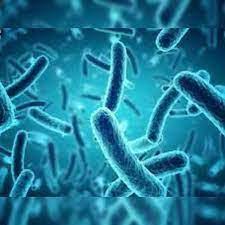
The Parliament has passed the Press and Registration of Periodicals Bill, 2023, simplifying the title allotment and registration process for periodicals.
- The new law aims to expedite the title registration process, reducing the time from 2-3 years to just 60 days, benefiting small and medium publishers.
- The Press Registrar General will play a key role in fast-tracking the process, eliminating the need for publishers to file declarations with local authorities.
Highlights:
- Grant of Title Allotment and Certificate of Registration for Periodicals Introduces a simple online mechanism for title verification and registration simultaneously.
- Eliminates the need for furnishing declarations or authentication by local authorities.
- Prohibits individuals convicted of offences involving terrorism or activities against state security from publishing periodicals.
- Allows printing facsimile editions of foreign periodicals in India with prior Central Government approval and registration with the Press Registrar General.
- Facsimile editions refer to exact reproductions or copies of an original publication, typically a book, document, or periodical.
- Printing Presses Requires printers to provide online intimation to the Press Registrar General and local authorities.
- Removes the obligation for printers to file declarations or obtain authentication from authorities.
- Role of District Magistrate/Local Authority District Magistrate/local authority plays a minimal role in the grant of Certificate of Registration and title allotment.
- District Magistrate provides comments/No Objection Certificate to the Press Registrar General within 60 days of receiving an application.
- Press Registrar General can proceed with the registration decision even if comments/No Objection Certificate are not received within 60 days.
- Eliminates the requirement for publishers to file declarations before the District Magistrate.
- The current PRPB Act 1867 was aimed at curbing what the British Government thought was the role of the press in the “revolt of 1857”. It was introduced during the Viceroyship of Lord John Lawrence (1864-1869)
R21/Matrix-M Vaccine : WHO Prequalification

In a significant development in the global fight against malaria, the World Health Organization (WHO) has recently added the R21/Matrix-M malaria vaccine to its list of prequalified vaccines.
- It was developed by Oxford University and manufactured by the Serum Institute of India, this vaccine holds promise in preventing malaria in children.
- The R21/Matrix-M vaccine became the second malaria vaccine to achieve WHO prequalification, the first one was the RTS, S/AS01 vaccine.
- WHO prequalification of the R21 vaccine serves as a robust assurance of the safety and efficacy of the vaccine.
- Products that achieve WHO prequalification gain credibility and are more readily accepted in international markets, as WHO applies rigorous international standards to evaluate their safety, effectiveness, and manufacturing compliance.
- WHO prequalification is often a prerequisite for procurement by international organizations, such as the United Nations Children’s Fund (UNICEF).
- It enhances the likelihood of a vaccine being included in global immunization programs, ensuring a wider reach.
- WHO prequalification is instrumental in securing Gavi support, enabling the implementation of vaccination programs in regions with limited resources.
- Gavi, the Vaccine Alliance, created in 2000 provides funding support for the deployment of vaccines in developing countries.
The Post Office Bill, 2023:
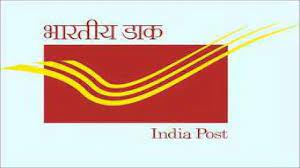
The Post Office Bill, 2023 aims to repeal the Indian Post Office Act, 1898, which has been in existence for 125 years.
- The Act regulates India Post, a departmental undertaking of the central government.
- The Bill contains provisions that allow the Centre to intercept, open, or detain any item, and deliver it to customs authorities.
Highlights of the Bill:
- The Bill allows the Centre to empower any officer to “intercept, open or detain any item” in the interest of state security, friendly relations with foreign states, public order, emergency, public safety, or contravention of other laws.
- This provision also allows post officers to hand over postal items to customs authorities if they are suspected to contain any prohibited item, or if such items are liable to duty.
- The Post Office exempt from liability
- The bill exempts the Post Office and its officer from “any liability by reason of any loss, mis-delivery, delay, or damage in course of any service provided by the Post Office except such liability as may be prescribed.
- The Bill removes all penalties and offenses under the 1898 Act.
- For example, offenses committed by post office officials such as misconduct, fraud, and theft, among others, have been deleted entirely.
- If anyone refuses or neglects to pay the charges for availing a service provided by the Post Office, such amount shall be recoverable as if it were an arrear of land revenue.
- The present Bill has removed Section 4 of the 1898 Act, which allowed the Centre the exclusive privilege of conveying all letters by post.
- However, courier services have been bypassing the 1898 law by simply calling their couriers “documents” and “parcels”, rather than “letters.”
- The 2023 Bill, for the first time, regulates private courier services by bringing it under its am
BRAHMA-2D : Indigenous River Model

Researchers at the Indian Institute of Technology Guwahati (IIT Guwahati) recently developed an indigenous river model, BRAHMA-2D.
- BRAHMA-2D (Braided River Aid: Hydro-Morphological Analyzer) is a mathematical model to gauge the flow of large braided rivers like the Brahmaputra.
- It is a quasi-3D river flow model which helps to understand how fast the water moves at different depths inside a river and its circulation around a structure like a spur installed to prevent river bank erosion.
- It can help engineers in the design of sustainable hydraulic structures like spurs, reverent, and other river bank protection measures in order to check river bank erosion.
- It was developed by the researchers at IIT Guwahati in collaboration with the Brahmaputra Board under the Union Ministry of Jal Shakti.
- It was successfully validated on the Brahmaputra River near Majuli Island, the second largest freshwater River Island in the world, in Assam, which is prone to river bank erosion.
- It integrates a two-dimensional model of water movement with a theory about entropy, a measure of disorder or randomness.
- It observes a dip phenomenon near spurs where the flow of water underneath increases, a phenomenon absent at points away from these structures.
- It has also been applied to understand the habitat suitability of aquatic species, especially endangered species, based on the availability of the required depth and flow velocity.
UNESCO Asia-Pacific Awards For Cultural Heritage Conservation 2023:

Three heritage projects from Punjab and Haryana have secured prestigious spots among the UNESCO Asia-Pacific Awards for Cultural Heritage Conservation 2023.
- UNESCO seeks to encourage private sector involvement and public-private collaboration in conserving the region’s cultural heritage for the benefit of current and future generations.
- Since 2000, UNESCO Asia-Pacific Awards for Cultural Heritage Conservation have been recognizing the achievement of the private sector and public-private initiatives in successfully conserving or restoring structures, places and properties of heritage value in the region.
- Among the recognised sites, five are from China, six from India, and one from Nepal.
- Rambagh Gate & Ramparts is a three-storied structure.
- The restoration involved using traditional building techniques and locally sourced materials like the characteristic Nanak Shahi bricks set in lime mortar.
- Pipal Haveli, Gurdaspur emphasises ecological and traditional building methods, utilising locally sourced materials and vernacular architectural language.
- It supports women’s empowerment through initiatives like the BaRi Collective, offering programmes that strengthen women’s livelihoods via environmentally conscious craft practices.
Artificial Intelligence (AI) Tool : Watsonx.ai

At the recent COP28, NASA and IBM announced that an Artificial Intelligence (AI) tool called watsonx.ai would be available on the open-source AI platform Hugging Space.
- watsonx.ai is an Artificial Intelligence tool jointly built by IBM and NASA.
- It will help users monitor the Earth from space, measuring environmental changes that have already happened while also making predictions about the future.
- The model is also designed to be extremely simple to use. A user would merely need to select a location and a date, and the model will highlight changes in floodwater, reforestation efforts and other relevant factors.
- watsonx.ai work is built on a foundation model, it’s trained on a broad set of uncategorised data allowing the model to apply information about one situation to another.
- NASA provides the datasets and IBM created the foundation model to interpret them.
- In order to train the model to comprehend visual sequences that unfold over time, scientists filled in blank areas in each image and asked the model to piece it back together.
Project PRAYAS:

The International Organisation for Migration (IOM) launched Project PRAYAS to help Indian workers and students migrate in a secure, orderly, and regular manner.
- Promoting Regular Assisted Migration for Youth and Skilled Professionals (PRAYAS) was launched in partnership with the Ministry of External Affairs (MEA).
- It is one of the first attempts to consolidate all the state-level initiatives for safe, orderly, and well-managed international migration.
- Goal is to facilitate safe, orderly, and regular migration for aspiring Indian migrant workers and students through policy recommendations in collaboration with the MEA and state governments, thus strengthening international migration governance.
- It aims to undertake a study, capturing the key migration trends, the needs and aspirations of migrants, and the major international migration and mobility initiatives taken by the union, as well as the state governments sharing the analysis with the ministry.
UNESCO’s Prix Versailles Award:

Kempegowda International Airport (KIA) Bengaluru has earned prestigious accolades at UNESCO’s 2023 Prix Versailles.
- UNESCO’s Prix Versailles is announced each year at UNESCO since 2015.
- The Prix Versailles awards celebrate outstanding achievements in architecture and design on a global scale.
- It focuses on intelligent sustainability as a cultural driver, acknowledging innovation, and creativity, reflection of local heritage, ecological efficiency, and values of social interaction.
- The Terminal 2 (T2) secured recognition as one of the ‘World’s most beautiful airports’ and was awarded the coveted ‘World special prize for an interior 2023.’
Turquet’s octopus:
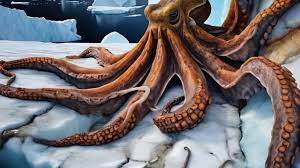
Recent research published in the journal Science, unveiled a surprising connection between the movements of Turquet’s octopuses and the stability of the West Antarctic ice sheet.
- Turquet’s octopus is a species of benthicoctopus with a circumpolar Antarctic distribution.
- The species has a wide depth range, occurring from shallow waters to 4,000 m deep.
- It is characterised by the absence of a skin ridge around the body, and its nearly smooth skin, which is covered with low granular bumps.
- In the wild it is known to be preyed upon by Patagonian toothfish off South Georgia and Weddell seals off the South Shetland Islands.
- These cephalopods, inhabitants of the Southern Ocean, navigated the region when the ice sheet melted approximately 125,000 years ago.
- Conservation Status: IUCN: Least concern (LC)
Pantoea Tagorei : New Species Of Bacteria
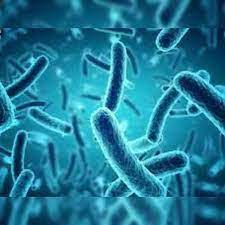
A team of researchers from Kolkata’s Visva-Bharati has identified a new species of bacteria which has been named Pantoea Tagorei in homage to Nobel Laureate Rabindranath Tagore.
- Pantoea Tagorei was discovered from soil samples collected in the Jharia coal mines.
- It has unique properties beneficial for plant growth.
- It not only solubilizes potassium but also replenishes nitrogen and solubilizes
- The team has conducted experiments by introducing this bacterium to farmers, who have expressed satisfaction with the positive results.
- This bacteria marks a significant stride toward fostering environmentally friendly agricultural methods.
Surge In COVID-19 Cases:
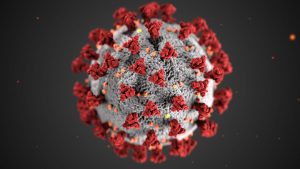
Amid a surge in COVID-19 cases in India and the detection of a subvariant JN.1, the India SARS-CoV-2 Genomics Consortium (INSACOG) chief said that no additional dose of vaccine is needed against the subvariant at present.
- India SARS-CoV-2 Genomics Consortium (INSACOG) is jointly initiated by the Union Health Ministry of Health and the Department of Biotechnology (DBT) with the Council for Scientific and Industrial Research (CSIR) and the Indian Council of Medical Research (ICMR).
- It is a consortium of 54 laboratories to monitor the genomic variations in the SARS-CoV-2 by a sentinel sequencing effort, which is facilitated by the National Centre for Disease Control (NCDC), Delhi, involving the Central Surveillance Unit (CSU) under the Integrated Disease Surveillance Programme (IDSP).
- The SARS-CoV-2 virus, commonly known as the COVID-19 virus, posed unprecedented public health challenges globally.
- INSACOG was established to expand the whole genome sequencing of the SARS-CoV-2 virus across the nation, aiding our understanding of how the virus spreads and evolves, and providing information to aid public health response.
- Any changes to the genetic code or mutations in the virus can be observed based on the analysis and sequencing of samples done in the laboratories under INSACOG.
Nuclear Fusion : Study
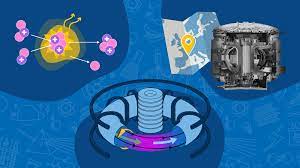
Scientists have managed to repeatedly produce nuclear fusion ignition for the first time, marking a major milestone towards achieving near-limitless clean energy at scale.
- Nuclear Fusion is the process by which two light atomic nuclei combine to form a single heavier one while releasing massive amounts of energy.
- Fusion reactions take place in a state of matter called plasma—a hot, charged gas made of positive ions and free-moving electrons with unique properties distinct from solids, liquids, or gases.
- The sun, along with all other stars, is powered by this reaction.
- Tokamaks devices designated for the task of doing this here on Earth—nuclear fusion reactors — are called tokamaks.
- Tokamaks are often also called ‘artificial suns’ due to the fact that these doughnut-shaped machines replicate processes that occur in the sun.\There are currently over 200 tokamaks in operation across the globe, with the scientific milestones achieved in these devices developing a roadmap for the operation of the International Thermonuclear Experimental Reactor, or ITER, the world’s largest fusion experiment under construction in the south of France.
- A commercial tokamak will aim to use the thermal energy of plasma heated by fusion to heat water, create steam, and, in turn, spin a turbine that generates electricity.
- Though fusion can involve a wealth of chemical elements, the nuclear reaction that most tokamaks aim to make viable is the fusion of the heavy hydrogen isotopes deuterium (with a nucleus of one proton and one neutron) and tritium (one proton and two neutrons).
- Fusing the atoms of these elements together creates a neutron and a helium nucleus.




